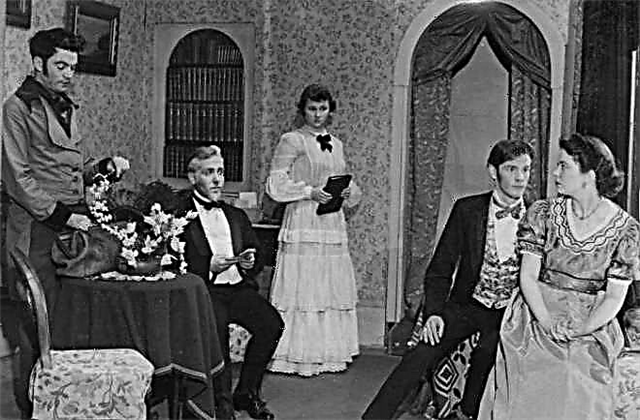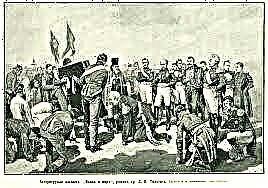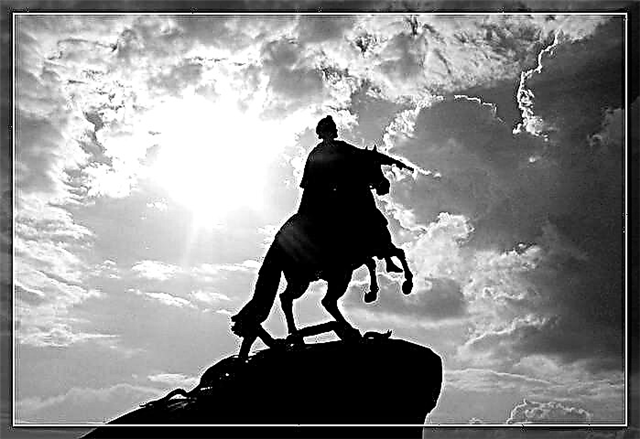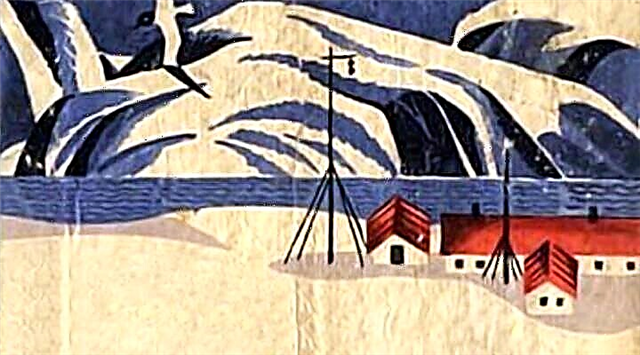Lermontov's “Sail” is one of the poet’s most popular poems. This is evidenced by numerous linguistic studies of the text and various arrangements and interpretations of the work.
History of creation
In September 1832, M.Yu. Lermontov writes M.A. Lopukhina's letter, which admits that she is upset by the unsuccessful attempt to enter St. Petersburg University. The young poet was lonely and depressed. In the same message were the lines of the poem “The Lone Sail Whitens”. The first line is borrowed from the unfinished poem by Bestuzhev-Marlinsky, "Andrei - Prince of Pereyaslavl." The question of exactly which “sea” landscape inspired Mikhail Yuryevich remains controversial. It could be the Gulf of Finland or the Neva River.
Since the author did not take Sail seriously, the poem was first published only in 1841 in the journal Domestic Notes.
Genre, direction and size
“Sail” is written in the genre of lyric short story. It is characterized by the intimacy of the statement, combined with the presentation of the storyline. Interest in this genre was characteristic of the poetry of the Decembrists, which Lermontov was fond of in his youth.
The poetic size used by the author is a four-foot iambic, one of the most popular in Russian lyrics of the 19th century. This makes the text more dynamic, brings the intonation of the work closer to conversational. Lermontov uses a cross-rhyme with alternating female and male endings.
The meaning of the name
The poem has the name "Sail" in tune with its central character. Everyone is free to interpret in his own way its meaning and significance of allegory.
- Firstly, you can correlate the sail with the eighteen-year-old Lermontov, who left Moscow, arrived in the capital to go to university. However, his dream - to study as a philologist - collapsed, and he felt lonely among the raging life of the capital.
- Secondly, the image of a thinking person who does not want to come to terms with the reality surrounding him is presented. He longs for change and is ready to fight the waves, like a sail, if only they happen.
Images and Symbols
The poem is filled with symbols and allegories. If human life is the sea, then the person in it is a sail, lonely, persecuted, not knowing peace and shelter. Lermontov reflected this image not only in poetry, but also in painting: his watercolor work is known, as if illustrating a poem. The storm in this work is also much more than a sea flurry. It is associated with the revolution, and these thoughts are caused by the reaction to the December uprising of 1825.
The lyrical hero realizes that if he wants to achieve his goals, then the serene path illuminated by the sun is not for him. Only overcoming a real storm can lead him to a cherished dream.
Themes and motive
- Loneliness. This is the main theme of the poem. It is revealed through the central image of the composition - the white sail, which has left its native land and is struggling with the brutal elements of the sea. The motive of loneliness is one of the key in Lermontov’s lyrics.
- freedom. The goal of the lyrical hero is to gain freedom. Therefore, he decided to leave his native land, to flee from the sun's rays to meet adversity.
- The revolution. Her poem personifies the image of a storm. In addition, it is no coincidence that the author considers the lyrical hero rebellious, because his actions contradict generally accepted traditions. He wants to conquer new horizons, looking for adventure.
Idea
The main idea of the poem is the search for its destiny. The lone sail does not see salvation in serene peace and decides to engage in battle with the elements. He does not feel satisfied in the azure and the sun and is trying to find himself otherwise.
Common places of romantic poetry, such as loneliness, a thirst for adventure, an image of the sea, are reinterpreted in “Sail” and are united by a new motive. In literary criticism, he is called the motive of the "extra man." Such heroes include Onegin, Pechorin, Rudin. Thus, the role and meaning of “Sail” can hardly be overestimated: a very significant topic for Russian literature began to develop from this small poem.
Means of artistic expression
One of the main techniques used in the poem is the antithesis. Many things are opposed: peace is a storm, a distant country is a native land. And there are also opposite actions: looking - threw.
In the image of the sail epithets are of great importance: lonely, rebellious.
There are many inversions, for example, in the second verse of the first quatrain.
The role of punctuation in this work is great. Early romanticism is characterized by understatement, the silence of some thoughts, which was expressed by ellipses. Lermontov uses the same technique in the second lines of each quatrain. Rhetorical questions and exclamations give an excited character.
Not without impersonations. For this trail, the role of verbs is especially significant: waves play, the wind blows, throws, searches, runs, asks (for a sail).
In addition, the entire poem can be considered an allegory of the life of a person trying to find the meaning of life.












